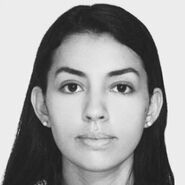The role of biotic interactions in explaining distribution patterns of riverine organisms
![]()
![]()
![]()
![]()
![]()
![]()
![]()
![]()
![]()
Project leader
Species distribution models (SDMs) are commonly employed instruments for understanding and forecasting species distribution across both spatial and temporal dimensions. SDMs deduce the probability of species occurrence based on their environmental associations and may serve to characterize species responses to potential alterations in future environmental scenarios. However, methodological advancements are needed to improve predictive accuracy, especially in considering biotic interactions, ecological functions, and model transferability. In RESIST Phase I, we addressed these gaps using three approaches. First, we studied biotic interactions through a semi-mechanistic modelling cascade to study the effects of climate change on a host-parasite pair, specifically future mussel habitats and their dispersal, dependent on brown trout as the fish host. Second, we conducted a meta-analysis to examine the impact of multiple stressors on leaf litter decomposition in freshwater ecosystems, emphasizing the need to incorporate local ecological complexities into models for better predictions of stressor impacts on ecosystem functions. Third, we analysed the transferability of SDMs under novel environmental conditions, such as post-drought scenarios, highlighting the importance of considering ecological mechanisms beyond the inclusion of environmental variables such as species tolerance and spatial autocorrelation for reliable predictions under changing conditions. In RESIST Phase II, we will build on these insights to focus particularly on the role of biotic interactions in species distributions, aiming for more accurate and comprehensive SDMs by addressing their influence on distribution patterns and avoiding overly simplistic predictions. Specifically, our objective is to expand the single-species SDMs from Phase I to incorporate species interactions through Joint Species Distribution Models (JSDMs), alongside dispersal. Our analysis will identify potential species interactions across organism groups of varying body sizes and effects of stressor types and thus will enhance our ability to both explaining species distributions in general and forecasting river restoration effects in particular. We will collect and clean occurrence records of diatoms, macroinvertebrates, and fish for the RESIST catchments and across Germany, and prepare appropriate environmental variables from sources both inside and outside RESIST. The development of JSDMs is first focused on the model catchments. The spatial prediction of our catchment-scale models will be further improved by considering both species-related dispersal and riverrelated connectivity characteristics. In a 2nd step we will broaden the spatial scale and aim for analyses across a selection of catchments in Germany representing different degrees of degradation and/or recovery, considering baseflow-driven flow regimes, water temperature, and water salinity representing historical conditions across Central Europe. Overall, A15 will generate high-resolution, spatially explicit information on the probability of species presence and community composition, integrating the effects of abiotic and biotic factors in the models.

Graciela Medina-Madariaga (University of Berlin)
Enhancing the predictive ability of species distribution models: stressor interactions, life cycle and depicting degradation and recovery
Where can we find them? This is the question Species Distribution Models (SDMs) try to solve. SDMs are among the most used models used in environmental sciences, expressing information about the probability to find a species at certain location and time. They are considered valuable for reintroduction and conservation of species programmes. However, their application in freshwater environments has been limited due to the complexity of such ecosystems. In addition, there is a need to enhance the predictive ability of such models to improve management strategies in a changing world.
This project focuses in the investigation of new approaches to enhance the predictive ability of SDMs. Three aspects have been identified as crucial: (i) investigating the effect of the interaction occurring among multiple stressors in the distribution of species, (ii) analysing the spatial distribution of species with complex life-cycles at different life stages, and finally (iii) to consider trajectories of environments subject to different status and stressors including recovery.
Contact: graciela.madariaga@igb-berlin.de
First Supervisor: Prof. Dr. Sonja Jähnig (Leibniz Institute of Freshwater Ecology and Inland Fisheries (IGB), Ecosystem Research)
Second Supervisor: PD Dr. Christian Feld (University of Duisburg-Essen, Aquatic Ecology)
Mentor: Dr. Alain Maasri (Niedersächsische Landesbetrieb für Wasserwirtschaft, Küsten- und Naturschutz (NLWKN))
